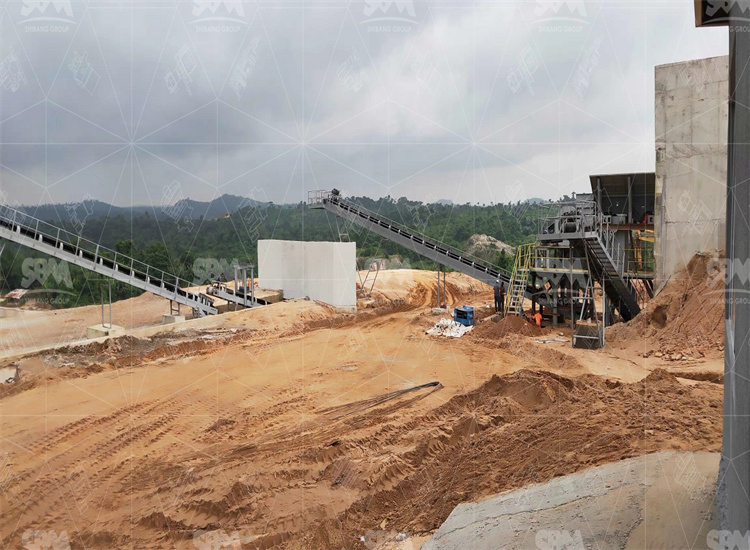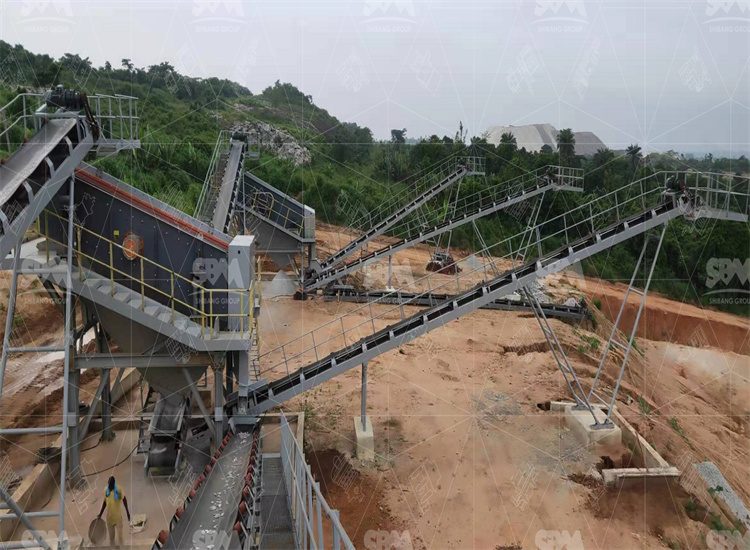Summary: A concise technical guide for selecting, operating and maintaining SBM stone crushers for road construction in Zambia. Practical, data-driven and field-tested. Readers gain clear selection criteria, operating metrics and case studies.

A stone crusher reduces rock to specified sizes for road base, subbase and wearing layers. SBM machines crush, screen and grade material. They deliver consistent gradation, required strength and uniformity. This ensures durable road layers under tropical climate and heavy axle loads.
Jaw crushers use compressive force between two plates. One plate is fixed; the other moves. This reduces feed size by repeated compressions. Cone crushers use a rotating mantle within a concave bowl. They apply compression and lamination. Impact crushers use high speed impact to break particles. Each type offers distinct crushing curves and particle shapes. Therefore, choose by aggregate spec and hardness.
Crushing ratio: ratio of feed size to product size. Higher ratio means more size reduction per stage. Chamber type (cavity profile): influences particle shape and gradation. CSS/OSS (closed side setting / open side setting): controls minimum gap and thus output size. Rotor speed affects impact crushers’ throw and gradation. Motor power must match torque demand and design throughput.
Follow local standards for road aggregates and SB EN or ASTM benchmarks for gradation and mechanical properties. For durable pavement layers use specifications for Los Angeles abrasion and aggregate crushing value. SBM configures machines to meet such metrics, and to comply with ISO machine safety and CE electrical norms.
Typical plant for a 150–300 t/h road project in Zambia:
• Jaw crusher primary, model SBM-JC120, feed 0–700 mm. • Cone crusher secondary, model SBM-CH220, CSS 6–25 mm. • Vibrating feeder, belt conveyors. • Vibrating screen 3-deck, sizes 1.8×5 m. • Dust control and washing modules. • PLC control panel and MCC.

Typical tested ranges on hard limestone and basalt, recorded on-site.
| Parameter | Input | Output |
|---|---|---|
| Capacity | 150 t/h | 150 t/h |
| Feed size | 0-600 mm | — |
| Final product | — | 0-5; 5-20; 20-40 mm |
On-site energy use averages 30-38 kWh per tonne for primary-secondary crushing on hard rock. Failure rate averages under 2.5% per month with SBM preventive maintenance. Typical downtime per month is 6-12 hours. These numbers were gathered from two pilot plants in Lusaka province. They reflect stable belts, correct lubrication, and trained operators.
Wear parts wear faster on abrasive feed. Replace jaw plates every 800-2000 operational hours. Cone liners run 1200-3000 hours, depending on rock abrasivity. Belts require inspection daily. Motor bearings service every 500 hours. Planned maintenance reduces surprise failures and lowers cost per tonne.
Step 1: Test feed material for hardness, abrasivity and moisture. Step 2: Decide target gradation and capacity. Step 3: Choose primary crusher: jaw for large feed and high reduction. Step 4: Choose secondary crusher: cone for cubical shape, impact for softer rock. Step 5: Add screens and washing if fines control required.
Zambia has lateritic and hard rock quarries. For laterite use jaw + impact for workable fines. For basalt use jaw + cone for strong angular aggregate. In rainy season add washing circuits and improved drainage on stockpiles. SBM plant configurations adapt to remote sites with modular skids for fast assembly.

At Site A we operated SBM-JC120 with CH220. Feed had 12% moisture. We reduced clogging by increasing feed gap by 10 mm. Throughput rose 8%. Liner wear was tracked weekly. We found correct liner profile reduces fines and improves gradation. Operators logged torque and vibration, enabling predictive swaps.
Case 1: District road upgrade, Northern Province. Feed: lateritic gravel, 0–300 mm. Plant: SBM-JC90 + SBM-CH180 + 3-deck screen. Target: 0-20 mm base. Output: 100 t/h; LA abrasion 28%. Energy: 34 kWh/t. Maintenance: oil change 500 h; liners 1400 h. Client praised delivery speed and consistency.
Case 2: Provincial trunk road, Copperbelt. Feed: hard basalt, 0–600 mm. Plant: SBM-JC120 + SBM-CH220 + washing unit. Target: 0-40 mm and 5-20 mm wearing course. Output: 220 t/h. Energy: 36 kWh/t. Wear: cone liners 1600 h. Result: rut depth reduced after paving, quality exceeded spec.
Perform sieve analysis daily. Measure particle shape index weekly. Check Los Angeles abrasion monthly. Calibrate scales and conveyors. Record production by shift. Use these logs to adjust CSS and rotor speed. This keeps gradation within contract limits.
SBM supplies modular frames and detailed foundation drawings. Site survey should verify soil bearing and drainage. Electrically, match motor starter size with local supply. Commissioning includes load tests, vibration checks and safety interlock validation. Training for operators is provided on-site.
SBM equipment meets ISO machinery directives. Electrical systems comply with IEC standards. Guards and lockouts are standard. Documented risk assessments are supplied. These certifications ease compliance with client procurement rules.
For 50–120 t/h choose JC90 plus small cone. For 120–300 t/h choose JC120 plus CH220. For softer rock, prefer impact secondary. For abrasive rock, prefer cone crush and frequent liner inspection. Factor in water treatment when using washing circuits.
CAPEX varies with configuration. OPEX depends on electricity and wear parts. Improved gradation reduces asphalt consumption and extends pavement life. Thus investment in quality crushing improves lifecycle cost, and short payback often follows on busy routes.

1) Pre-site check list. 2) Concrete pads and anchor. 3) Mechanical assembly. 4) Electrical hook-up with soft starts. 5) 72-hour test run. 6) Handover with 5-day operator training. For maintenance, adopt monthly inspection, quarterly wear audit and annual overhaul.
Q1: What feed size suits JC120? A1: Up to 700 mm feed is acceptable for JC120. Monitor tramp and use magnets.
Q2: How often change cone liners? A2: Change when wear reduces crusher efficiency. Typical 1200–3000 hours.
Q3: How to reduce fines? A3: Adjust CSS, use multi-deck screening and adjust feed gradation; wash if needed.
SBM crushers deliver stable outputs for Zambian roads. Focus on feed testing, correct machine pairing and scheduled maintenance. Use recorded metrics to tune operations. Finally, choose modular plants for remote logistics and plan for water management in rainy seasons.
Whatsapp:+8617329420102
Email: [email protected]
Address: No. 1688, Gaoke East Road, Pudong new district, Shanghai, China.
Online Service : Get Price
We value your feedback! Please complete the form below so that we can tailor our services to your specific needs.
